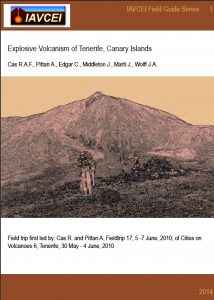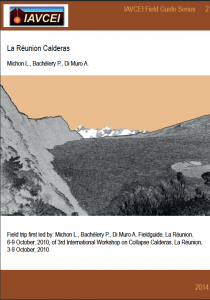Field trips across volcanic terrains commonly feature at conferences and workshops of IAVCEI and its affiliated commissions. Whilst field guides are originally prepared for the benefit of original field trip attendees, they are often a useful resource for future researchers, educators and visitors to the field area. The IAVCEI field guide series provides an opportunity to disseminate these field guides to a wider audience. The key elements of field guides in this series are that they pertain to a specific local geographic area of volcanic interest, and highlight the scientific features at one or more discrete localities, which may be linked by a logical travel route.
Neither IAVCEI, nor the field guide authors nor the source organisation take any responsibility for any harm or accidents that might occur to people or property using these field guides. Person(s) who choose to use these field guides take total responsibility for their own safety and welfare in using the field guides.
Guidelines and responsibilities for authors
Generally, field guides in this series will not be formally peer-reviewed, so it is the responsibility of the authors to provide accurate scientific background and appropriate acknowledgement of previous work.
Previous literature must be cited and referenced appropriately; authors may choose their referencing style, which should be comparable to the style of a modern professional scientific journal. Figures and tables must be referenced appropriately, with permissions obtained where necessary.
Field guides originally presented at IAVCEI affiliated conferences and workshops held later than 2005 will be considered. There is no specified format for field guides and authors are welcome to submit their field guide either in its original format, or as a modified version.
Submission process
Please submit your field guide fully formatted (i.e. proof-read; figures and tables inserted in their correct place; and consistent text, reference and heading formatting) to the co-ordinator as a word processing document or a PDF. The bibliographic details of the original field guide (e.g. conference details) must be included.
The co-ordinator reserves the right to accept, recommend changes to, or reject submissions according to appropriateness to the Field Guide Series and quality of presentation.
If the field guide is acceptable, a standard cover page will be inserted at the front of the manuscript, and it will be uploaded to the IAVCEI website.
Co-ordinator
Adrian Pittari (University of Waikato, New Zealand)
apittari@waikato.ac.nz
(NB: arrangements can be made to receive files that are too large to email).
Guidelines for Users
Field guides in this series were originally written for a scientific meeting, for which the field trip leaders had organised relevant logistics (e.g. health and safety, permission and access to certain sites). For various reasons some localities cited in field guides may have been modified, have changed hazard conditions, or are no longer accessible. Visitors to field localities are responsible for managing their own safety and personal risk at these sites. Visitors must also ensure they have permission to access sites on private or restricted land.
Explosive Volcanism of Tenerife, Canary Islands
Cas R.A.F., Pittari A., Edgar C., Middleton J., Martí J., Wolff J.A.
Region – Spain, Canary Islands, Tenerife
La Réunion Calderas
Michon L., Bachèlery P., Di Muro A.
Region – France, Reunion Island)
Bolsena, Latera and Vico calderas, central Italy
Palladino D.M., Acocella V., Giordano G., Cas R.F.


